

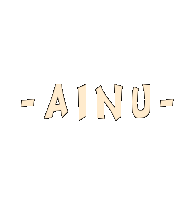
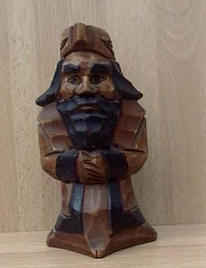
be known as "the Japanese" completed their
migrations from the Asia mainland, the islands
of Japan were already inhabited by a race of
people known as the Ainu.
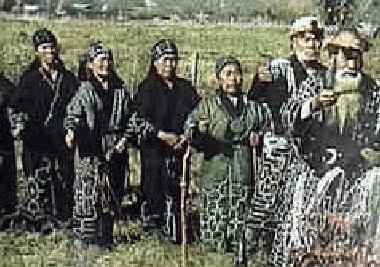
northward in a series of military campaigns waged
against them by the technically advanced warrior
clans from Asia. The Ainu's retreat eventually
ended in Hokkaido where they attempted to
continue their customs, religious rituals
and way of life.
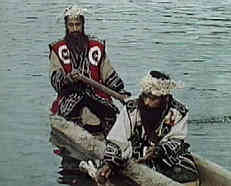
country," there still may be found remnants of this
once proud and vigorous people who roamed
the Japan islands long before the
"Japanese" themselves arrived.
Unfortunately, too little
is known of these native
people since they
have no written language and
once the spoken
word is gone, there is nothing
left.
Governmental and private efforts to document
the ways of the Ainu also began quite late.
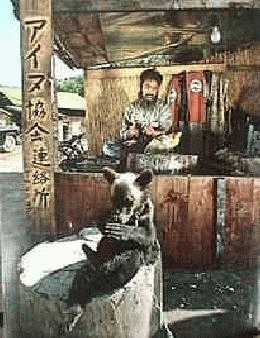
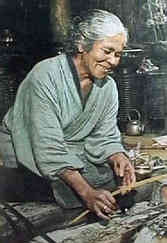
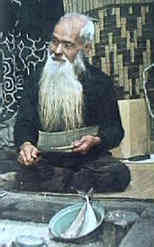
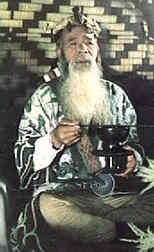
describe these people; today, it is perhaps more
appropriate to term these aborigines of Japan, the
"vanishing Ainu."
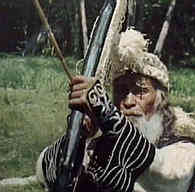
figured prominently in their festivals and religious
rites as well.The bear was central to their lives; its
meat was their food, its fur their clothing, and from
its bones, they fashioned tools and weapons. In
many ways, the bear and the Ainu shared a
relationship similar to that of the bison and the
Plains Indian of the western United States.

counterpart anywhere else in Japan and although
the government specifically prohibited certain Ainu
customs and practices which it felt were cruel and
barbaric, many were slow to be abandoned.
One such rather unusual custom was the first
tattooing of a girl's lips at
puberty (the process was
later completed at
around age seventeen or
eighteen);
Ainu women submitted to this facial
coloration to signify
that they were ready for
marriage. Men came
of marriageable age when
their beards had
grown to full length.
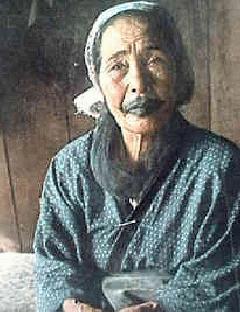


issued as early as 1871 but some Ainu women
continued to have it done secretly until fairly recent
times; one can still see women in their sixties and
seventies with the purple lip tattoo.
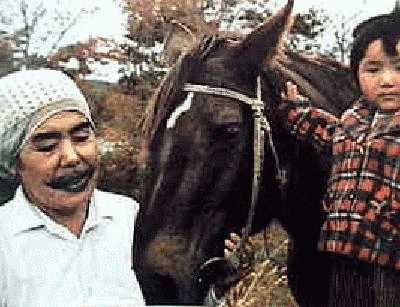
by many other practices as the Ainu themselves
move along the road to extinction. Perhaps 20,000
people today can claim some Ainu heritage;
however, estimates of 'full-blooded' individuals
range from a few hundred to a few dozen.
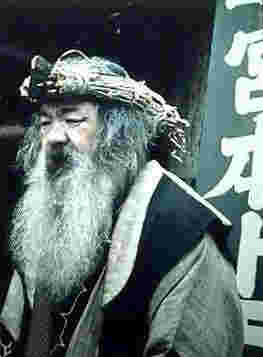
be seen in various scenic locales in Hokkaido
where hot springs are found and where tourist
bureaus have advertised the scenic beauty of the
region and the comfort of first class hotels.
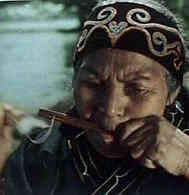
their songs and play their bamboo "jaw harps"
while the men can be seen carving wooden
souvenirs for the tourist trade; posing for
snapshots with weekend visitors also
augments the Ainu's income.
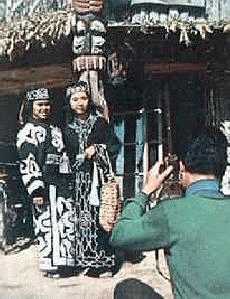
Japanese or Western, to be garbed in full Ainu
regalia and photographed standing proudly
alongside a "real" Ainu and for an additional
sum, they will even add a stuffed bear!


 ~NEXT~
~NEXT~
